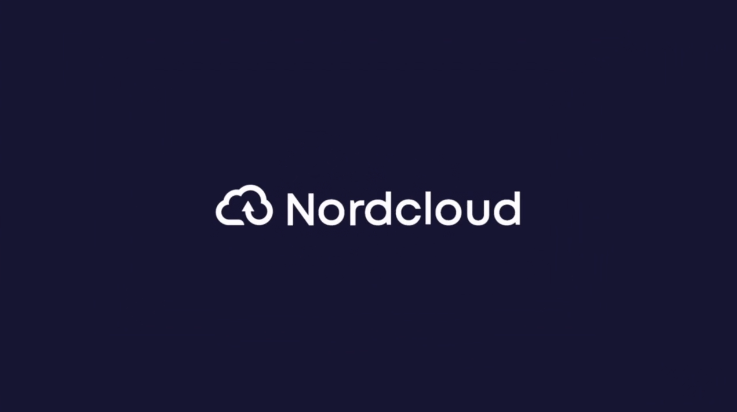
The Business Case for Application Modernisation: Cost Savings & Future-Proofing
- Maximising efficiency through application modernisation
- A closer look at legacy applications
- Elevating business applications with modernisation
- Demystifying the cost benefits of application modernisation.
- Strategies for cost-efficient modernisation
- Unlocking future benefits through modernisation
- Quantifying the savings
- The 5-year projection
In this blog, Pasi Katajainen breaks down the drivers and benefits of application modernisation, and walks through an example business case to show what these can really look like.
In recent years, the surge of digital transformation has accelerated the adoption of cloud platforms across all industries. This shift has brought a host of benefits, like faster software development cycles, enhanced scalability, improved resiliency, and, of course, substantial cost savings in IT spend for those who navigate it wisely.
Notably, the spotlight has been on cost savings and optimisation - a big topic among CIOs - driving the swift adoption of modern cost management processes, under the label of FinOps.
Maximising efficiency through application modernisation
While many cloud-empowered companies focus on refining their IT spending through established FinOps practices, one avenue often overlooked is application modernisation.
As other tools in the FinOps toolkit concentrate on streamlining infrastructure usage, allocation, and waste management - integrating application modernisation can provide an added boost. It prompts a reevaluation of how various software components, licenses, and technologies are leveraged.
Integrating application modernisation can provide an added boost to FinOps. It prompts a reevaluation of how various software components, licenses, and technologies are leveraged.
A closer look at legacy applications
Considering the overall application portfolio of enterprise companies, only a fraction of applications (and consequently, their IT ecosystem) fall under the category of actively developed and maintained cloud-native applications.
The majority of applications were acquired, developed, and architected many years, and in some cases, decades ago. For these applications, the conventional FinOps processes of right-sizing and waste management are quickly exhausted.

Finnair modernisation story
See how we helped Finnair rearchitect and replatorm 20 applications to eliminate technical debt and give access to native cloud services to bolster competitive position.
Legacy applications often come with their own set of challenges. They tend to be resource-intensive, relying on costly and intricate database solutions. And they’re typically built on top of traditional enterprise-grade runtime environments.
While these applications may have once represented the cutting edge of tech development, today's emphasis on resource efficiency, cost optimisation and waste management in enterprise IT makes them less adaptable to solutions like load-based scaling or deactivating unnecessary components.
Elevating business applications with modernisation
Modernising your applications in these scenarios can yield a dual benefit.
- It ensures that your key business applications align with current technologies and the skill sets readily available in the market.
- Additionally, it propels your cost optimisation efforts to the next level.
Understanding the technological benefits of modernisation is easy.
By replacing or rewriting a full or partial application with modern technology, you gain the ability to maintain, update and scale the solution in smaller parts. This reduces efforts and minimises the risk associated with running said application.
By replacing or rewriting a full or partial application, you gain the ability to maintain, update and scale the solution in smaller parts. This reduces efforts and minimises the risk associated with running it.
Demystifying the cost benefits of application modernisation.
The question often arises: Is application modernisation costly in the long run?
To truly comprehend the equation, one needs deeper insights. Consider a legacy application, written using JavaEE as an example. Its nature ties it to Enterprise Java Beans, essentially anchoring the solution to the existing commercial JavaEE platform.
Furthermore, for various reasons, the application is hosted in one virtual machine, while the database resides in a commercially licensed database platform. Although not a true monolithic application, the separation of frontend and backend capabilities is not complete.
In assessing the application's cost perspective, several factors come into play:
- Maintenance work becomes more time-consuming and expensive. Rectifying errors in legacy code is typically a lengthier process. Introducing new features and further development demands more effort, sometimes up to three times more, according to some analysts. Testing extends release cycles, leading to additional issues that require fixing in production.
- Infrastructure costs surge. Scaling, be it horizontal or vertical, proves challenging, often compelling you to operate within a static IT environment. This leads to over-provisioning and consequently, overspending on IT infrastructure.
- License costs form a significant expense. The entrenchment in expensive licenses for run-times, databases, and frameworks ceases to provide extra value. In fact, legacy technology can be more detrimental than beneficial to the business, resembling a perpetual tax.

W3Schools modernisation story
See how application modernisation helped W3Schools build a dynamic and innovative platform in a scalable way.
Strategies for cost-efficient modernisation
Modernising such an application offers multiple avenues. For now, let's focus on the quick wins on the cost-saving front, with clear actionable steps:
Replatforming and Rewriting:
- Transition from JavaEE to an open-source Java platform.
- Rewrite Enterprise Java Beans, if possible.
Monolith Splitting:
- Consider employing a thin client-side implementation with modern technologies like Angular or React.
- Retain most of the backend functionality in JavaEE.
Infrastructure Refinement:
- Revisit load balancing and SSL termination logic.
Database Modernisation:
- Shift from closed-source to open-source options like MySQL or PostgreSQL. Various paths and examples are available.
By embarking on these steps, you not only modernise the application but also pave the way for enhanced efficiency and substantial cost savings.
Unlocking future benefits through modernisation
Embracing a modernisation approach yields a plethora of benefits:
- Efficient Problem-Solving: By focusing on "problem areas" like the JavaEE platform and closed-source DBs, the effort required for application changes is minimal.
- Cost Parity: Remarkably, the cost of modernising applications can align closely with annual licensing fees for legacy solutions.
- Empowered Scalability: Replatforming onto open-source platforms and optimising load balancing empowers seamless horizontal and vertical scaling for application modules, offering improved IT spending options.
- Revitalised Architecture: A refreshed architecture with code and configuration separation, coupled with modern CI/CD solutions, accelerates production roll-outs. This minimises risks and issues, enabling teams to invest more time in innovation rather than troubleshooting.
Quantifying the savings
Let's do the math, based on a few assumptions:
- Modernisation costs: €100,000
- Annual enterprise-grade DB and JavaEE platform licensing: €100,000
- Annual application infrastructure costs (dev, qa, production environments): €100,000
Assuming best-case scenarios:
- Features development costs reduced to one-third, owing to improved workflows, simplified architecture, and enhanced tools.
- Reduced workload for the AMS team translates to lower application management costs.
- Scaling opportunities lead to smarter IT spending, including potential auto-shutdowns of development environments. Load-based scaling saves 50% of production environment costs, while only one-third of the QA and dev environment costs are incurred due to shutdowns.
The 5-year projection

Here's what you can expect over the next five years:
- €500,000 savings on license costs
- Infrastructure costs drop from €100,000 per year to €35,000 per year, resulting in savings of €325,000.
- Two-thirds of development and maintenance costs are saved, amounting to approximately €200,000 in savings.
After accounting for the initial €100,000 investment in modernisation, the business case concludes with a positive balance of €925,000 over five years. This low-risk initiative not only future-proofs your application but, crucially, drives substantial cost savings, turning the application into a positive margin generator.
Need a little help on your modernisation journey?
Ready to embark on your modernisation journey? Our expert team is here to guide you every step of the way. Check our application modernisation services or use the form below to kickstart your modernisation program.
Get in Touch.
Let’s discuss how we can help with your cloud journey. Our experts are standing by to talk about your migration, modernisation, development and skills challenges.




